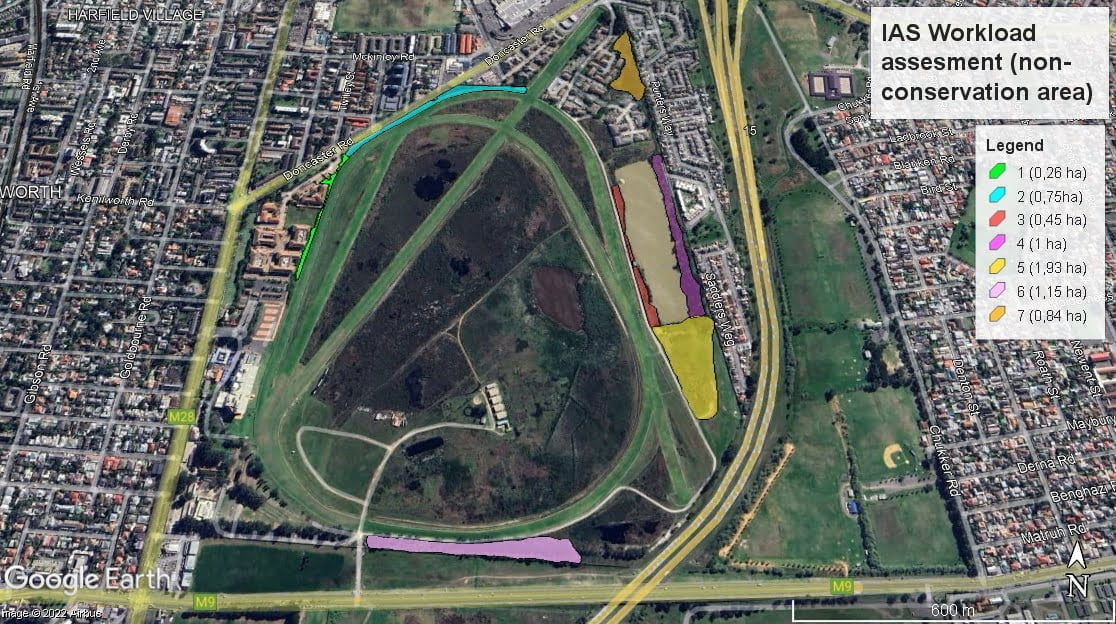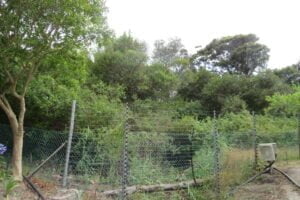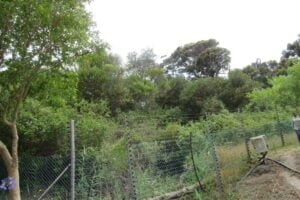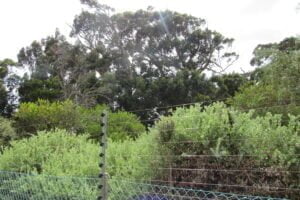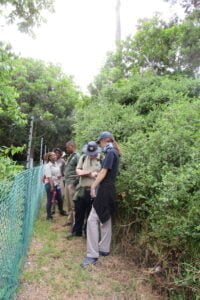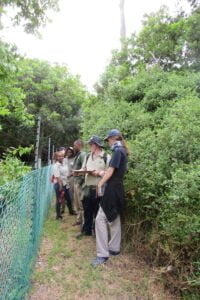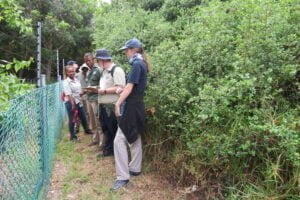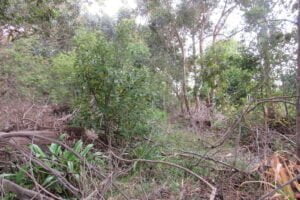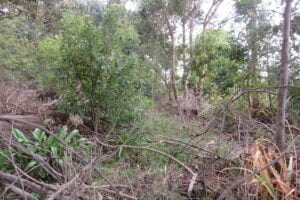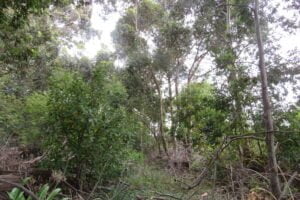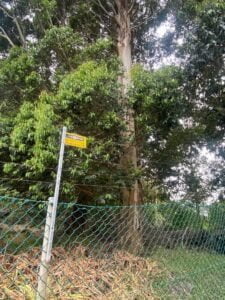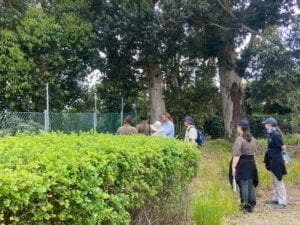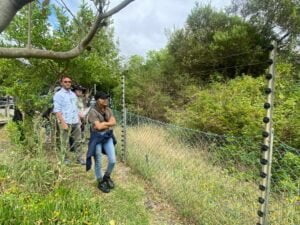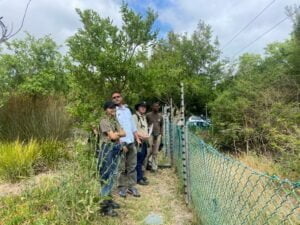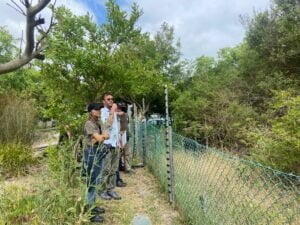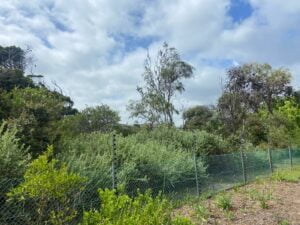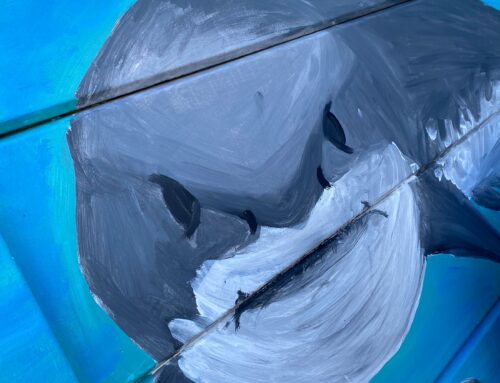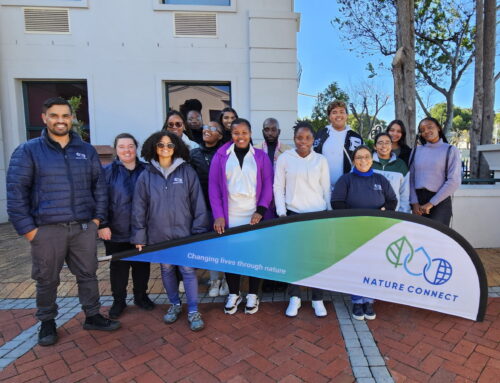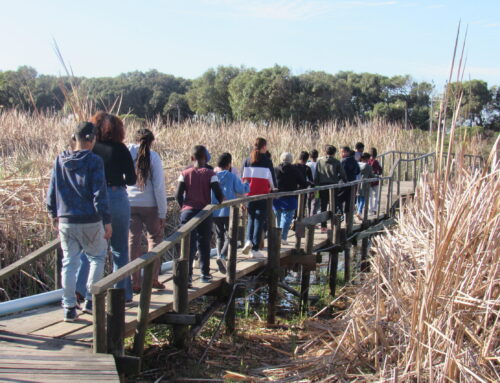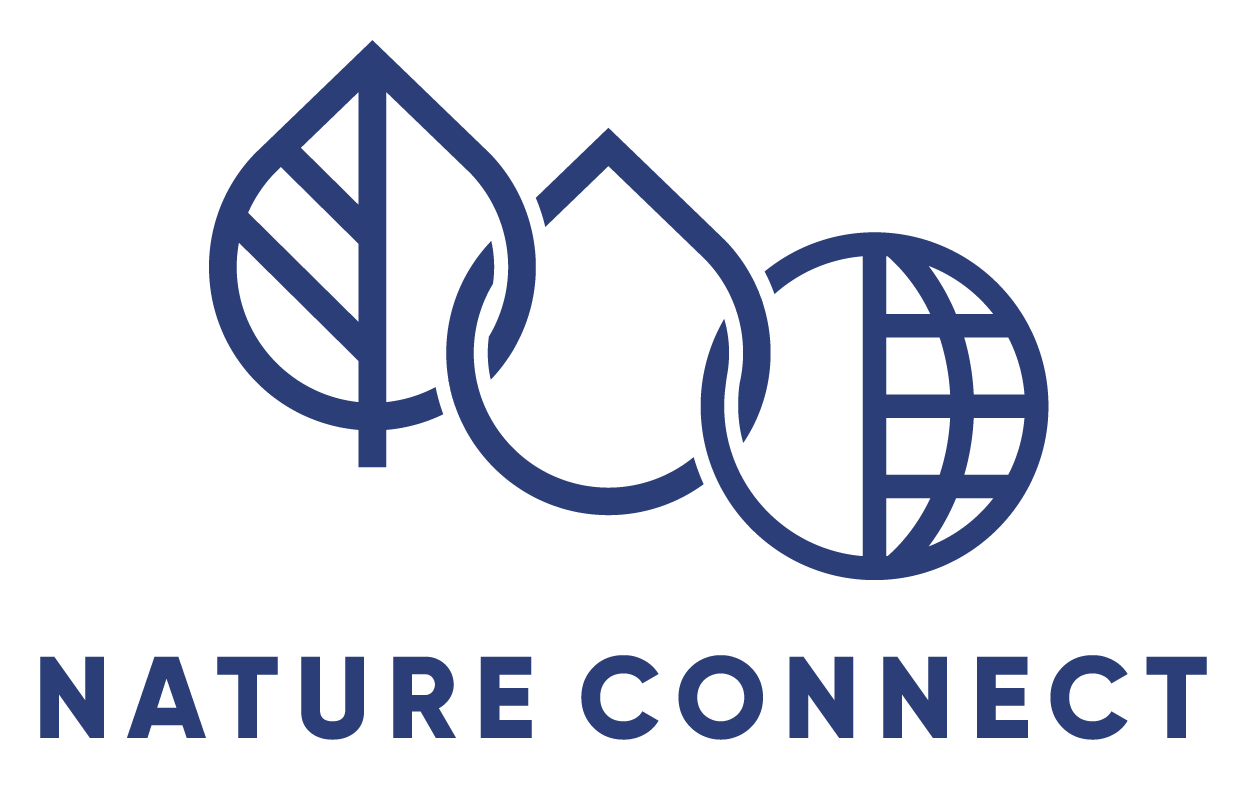Written by Fayrzu Prins, Conservation Officer, Kenilworth Race Course Conservation Area
Kenilworth Racecourse Conservation Area (KRCA) is privately owned by Cape Racing- Hollywood Bets, Kenilworth. It is a safe haven for many plants and animals of special concern due to its location in an urban matrix, and being undisturbed for over 200 years (the race course was established in 1882). With the race track cutting effectively surrounding the conservation area, it has become known to some as the “Golden Oval” for its rich biodiversity.
Invasive alien plants are one of the major threats to the KRCA. This is because the KRCA is surrounded by residential areas, with garden ‘escapees’ easily establishing in the natural system. Escapees are eradicated by conservation staff daily using a high to low priority ratings. The areas outside of the formal conservation area on the property are of course also highly favoured homes for these escapees. With the conservation staff attention being focused on the conservation area as a prioirity, species such as Port jackson (Acacia saligna), Giant Reed (Arundo donox), and Stinkbean (Paraserianthes lophantha) among others are prolific elsewhere on the Kenilworth Race Course property. Trees of cultural heritage value, such as Eucalyptus sp. are also onsite, but cannot be removed due to their heritage status. The conservation area is an ecological system and its surrounds therefore has great influence on the system and its functions.
In order to ensure the KRCA ecosystem functions optimally, the extrinsic factors have to be monitored. One method of monitoring entails conducting assessments of invasive alien plant species on the neighbouring properties. These plants affect the health and decrease the value of the conservation area by spreading seed and growing at a rate that out competes indigenous plant species taking up space and using up resources. Alien plants are typically even more successful in outcompeting “locals” when in or near waterways (and there are 16 seasonal wetlands in the conservation area).
Fire is also a major hazard to the property, especially where dense stands of invasive alien species have been allowed to establish. These alien plants gradually change the species composition of the natural area, and transform the fynbos into a thicket or woodland. High density of invasive plants also causes an increase in leaf litter, creating excess nutrients leaching into the soil, thereby changing the natural sandy soil pH from acidic to alkaline. It has also been noted that there is a different assemblage of birds present in the areas that are transformed – birds that prefer thicket vegetation as to the fynbos of the conservation area.
The conservation staff conduct, from time to time, botanical audits of the neighbouring properties to assess impacts. These are called “workload assessments”, and rely on the City of Cape Town’s Invasive Alien Species Field Verification methods. The plants identified on site, are categorised according to the National Environmental Management: Biodiversity Act’s Alien and Invasive Species Regulations. The estimated cover of the species is recorded in relation to the size of the area and the appropriate work method is suggested to eradicate the species. Working together with neighbouring estate managers is a vital part of ensuring the conservation area continuous to hold its value. This is an invaluable opportunity to assist and inform neighbours, developing work plans and growing their understanding of why it is important to eradicate invasive species on their property.
Removal of invasive species is typically a low priority for estate managers, and this becomes increasingly problematic, as the management becomes more onerous as growth becomes denser as a result of neglect.
Thanks to our recent workload assessment with neighbouring properties, these areas will now be managed in accordance with an invasive alien species management plan, and the work will be undertaken by the maintenance staff of the properties. This will allow land owners to save costs, instead of paying penalties to the Department of Environmental Affairs and Development Planning (DEA&DP). It will also facilitate healthy ecological functioning of the KRCA in conjunction with the appropriate landscape management plans within the properties. Working together with landowners and understanding each other’s objectives is an important part any urban conservation strategy. We look forward to future partnerships where the neighbours and local community can further benefit from the “Golden Oval” and a conservation area on their doorstep.


